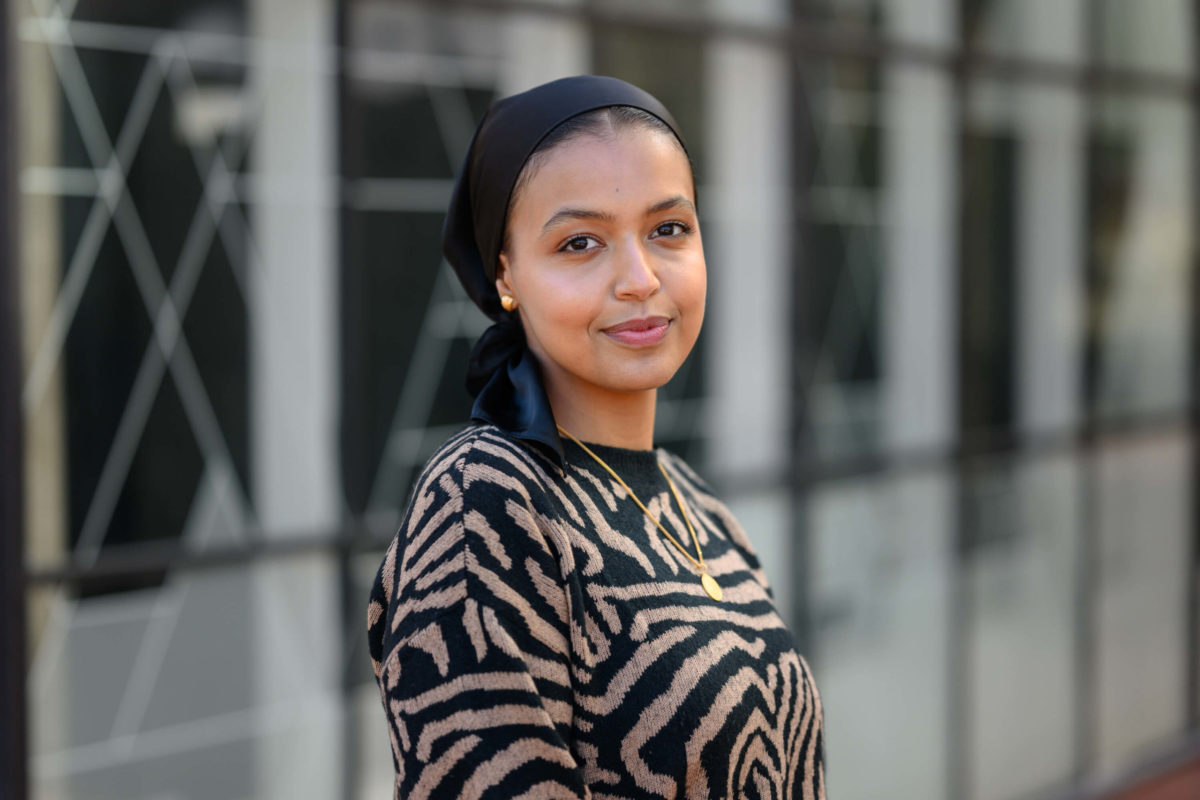For Sara Arman (MUP ’22), community organizing is essential.
When Arman graduated from Tufts with a bachelor in international relations and Middle Eastern studies, she began working with the Women and Public Policy Program at the Harvard Kennedy School. At the same time, she says, “I was looking for ways to get involved with community organizing outside of my work.” Through Arman’s involvement in the Chelsea, Massachusetts, planning board, she heard a number of proposals for urban development and housing projects. Her interest in the field, as well as a conversation with the director of a local housing nonprofit, led her to pursue urban planning at the Harvard Graduate School of Design.
During her studies, Arman also worked as the health equity corps coordinator for GreenRoots, an environmental justice organization in Chelsea, a small, densely populated city with a large low-income immigrant population. It is also her hometown. When she was in high school, GreenRoots helped Arman receive a discounted youth transit pass. She says, “GreenRoots first helped me think about transit through a lens of equity and justice. Providing youth with safe and affordable transit is essential in a dense urban community like Chelsea.”
[The] beautiful part of doing community organizing where you grew up is being able to rely on the relationships that you already have.
Sara Arman
Years later, Arman’s work with GreenRoots shows her commitment to collaborative, nonhierarchical community organizing. In the early days of COVID-19, she made emergency food deliveries, translated documents for community members, and helped create a neighborhood wellness system so residents could assist each other. As the pandemic continued, Arman became involved in vaccine outreach and equity efforts. She explains, “I didn’t have any public health experience beforehand—I came to it through community organizing.” Such work, Arman notes, involves “building community and connections across all residents.” At GreenRoots, she collaborated with other community organizations and local government to make Chelsea one of the most vaccinated cities in Massachusetts, with 92 percent of residents vaccinated.
“[The] beautiful part of doing community organizing where you grew up,” Arman says, “is being able to rely on the relationships that you already have.” The leader of the Chelsea Black Community, an organization that GreenRoots partnered with, for example, was Arman’s elementary school nurse. “Having those relationships and trust with each other makes your work so much more meaningful. The people that you’re working in service of are your community members,” she says.
Throughout her studies, Arman kept asking herself: “How can I take the skills and resources at Harvard and bring them back to my community—to further public health and enhance life in Chelsea?” Software skills from GSD studios and projects have facilitated more detailed and effective community efforts: Arman used GIS in her vaccine equity work to map out ethnic and racial disparities on a block by block level. And an independent study, which gave her access to information about real estate and leases, helped her write a lease agreement for a community land trust in Chelsea. Classes at Harvard Divinity School, taught by a Muslim chaplain, provided “spiritual nourishment” and encouragement to continue her organizing work.
Arman’s community organizing has also informed her work at the GSD. Her COVID vaccine outreach has led her to ask, “What are the ways we do health outreach for kids? How do you engage their parents? How do you create materials that are easily accessible and understandable for kids?” These questions led her to a child policy class at the Kennedy School, where Arman researched the racial and spatial disparities that make Chelsea children disproportionately vulnerable to climate change. Her paper advocates for a holistic approach to environmental justice—one that centers community participation and agency.
After she graduates, Arman intends to work at the intersection of public health and urban policy, to foster “vibrant, safe, and joyful” cities. She says, “How can the built, physical, and natural environment promote people’s health overall—whether that’s through enhancing green spaces for mental health, or transit systems for access to community health centers? What are the interventions you can do in the built environment that will impact people’s health outcomes?”
Read more profiles from the GSD Class of 2022.
